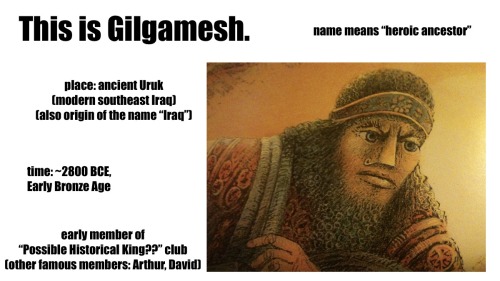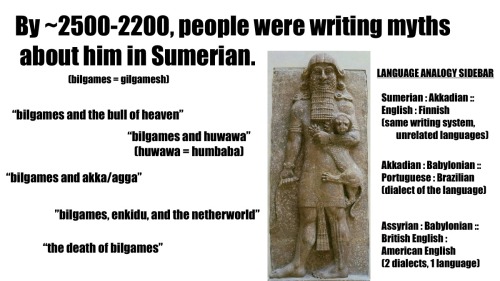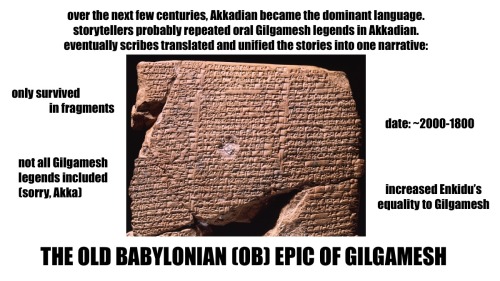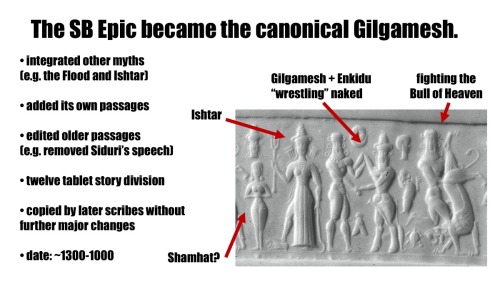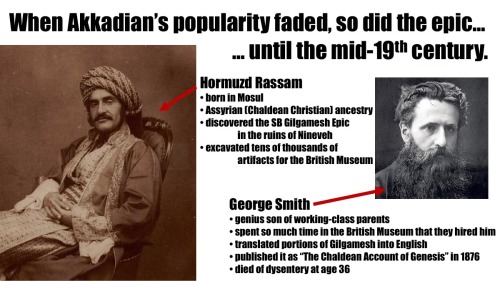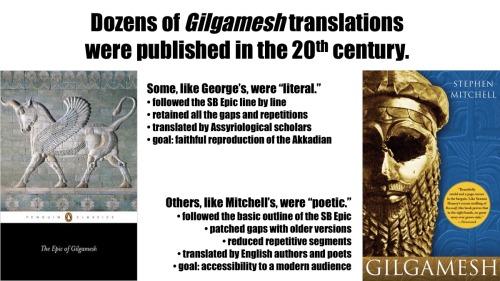IT’S FOLLOW A LIBRARY DAY!! (according To Twitter)

IT’S FOLLOW A LIBRARY DAY!! (according to Twitter)
In honor of this excellent bookish occasion, allow us to give special shout outs to all of the libraries that we have followed and/or have followed us here on Tumblr. For all of you bookworms and library cats out there that can’t get enough Booklrs, make sure to check these pages out and #followalibrary!!
@alachualibrary (The Alachua County Library District)
@badgerslrc (The Klamath Community College’s Learning Research Center)
@bflteens (Baker Free Library’s Tumblr For Teens)
@bibliosanvalentino (Biblioteca San Valentino [San Valentino Library])
@boonelibrary (Boone County Public Library)
@cheshirelibrary (Cheshire Public Library)
@cmclibraryteen (Cape May County Library’s Teen Services)
@darienlibrary (Darien Library)
@dcpubliclibrary (DC Public Library)
@detroitlib (Detroit Public Library Music, Arts & Literature Department)
@dplteens (Danville Public Library Teens)
@fontanalib (Fontana Regional Library)
@gastonlibrary (Gaston County Public Library)
@glendaleteenlibrary (Glendale Public Library Teens)
@hpl-teens (Homewood Public Library For Teens)
@myrichlandlibrary (Mansfield/Richland County Public Library)
@othmeralia (Othmer Library of Chemical History)
@petit-branch-library (Petit Branch Library)
@pflibteens (Pflugerville Public Library Teenspace)
@schlowlibrary (Schlow Centre Region Library)
@southeastlibrary (Southeast Branch Library)
@tampabaylibraryconsortium-blog (Tampa Bay Library Consortium)
@teencenterspl (The Smith Public Library Teen Center)
@teensfvrl (Fraser Valley Regional Library)
@teen-stuff-at-the-library (White Oak Library District)
@ucflibrary (University of Central Florida Library)
@waynecountyteenzone (Wayne County Public Library’s Teen Space)
Hopefully we didn’t miss anyone! (And, you know, if you’re not already following US, now’s a good a chance as any. ;) Just putting it out there.)
More Posts from Philosophical-amoeba and Others

Can you flatten a sphere?
The answer is NO, you can not. This is why all map projections are innacurate and distorted, requiring some form of compromise between how accurate the angles, distances and areas in a globe are represented.
This is all due to Gauss’s Theorema Egregium, which dictates that you can only bend surfaces without distortion/stretching if you don’t change their Gaussian curvature.
The Gaussian curvature is an intrinsic and important property of a surface. Planes, cylinders and cones all have zero Gaussian curvature, and this is why you can make a tube or a party hat out of a flat piece of paper. A sphere has a positive Gaussian curvature, and a saddle shape has a negative one, so you cannot make those starting out with something flat.
If you like pizza then you are probably intimately familiar with this theorem. That universal trick of bending a pizza slice so it stiffens up is a direct result of the theorem, as the bend forces the other direction to stay flat as to maintain zero Gaussian curvature on the slice. Here’s a Numberphile video explaining it in more detail.
However, there are several ways to approximate a sphere as a collection of shapes you can flatten. For instance, you can project the surface of the sphere onto an icosahedron, a solid with 20 equal triangular faces, giving you what it is called the Dymaxion projection.
The Dymaxion map projection.
The problem with this technique is that you still have a sphere approximated by flat shapes, and not curved ones.
One of the earliest proofs of the surface area of the sphere (4πr2) came from the great Greek mathematician Archimedes. He realized that he could approximate the surface of the sphere arbitrarily close by stacks of truncated cones. The animation below shows this construction.
The great thing about cones is that not only they are curved surfaces, they also have zero curvature! This means we can flatten each of those conical strips onto a flat sheet of paper, which will then be a good approximation of a sphere.
So what does this flattened sphere approximated by conical strips look like? Check the image below.
But this is not the only way to distribute the strips. We could also align them by a corner, like this:
All of this is not exactly new, of course, but I never saw anyone assembling one of these. I wanted to try it out with paper, and that photo above is the result.
It’s really hard to put together and it doesn’t hold itself up too well, but it’s a nice little reminder that math works after all!
Here’s the PDF to print it out, if you want to try it yourself. Send me a picture if you do!




On this date in 1884, the first edition of what would become the Oxford English Dictionary was published under the name A New English Dictionary on Historical Principles; Founded Mainly on the Materials Collected by The Philological Society. Research for the OED had begun in 1857, when the Philological Society in London established an “Unregistered Words Committee” to find words that were either poorly defined, or absent from contemporary dictionaries. When the list of unregistered words outnumbered the amount of words found in nineteenth-century dictionaries, the group decided to write their own. The Oxford University Press agreed to publish the dictionary in 1879, and the group published the first fascicle – which covered A to Ant –in 1884 to disappointing sales. It wasn’t until 1928 that the final fascicle was published, totaling 128 fascicles in total.
In 1933, a thirteen-volume set including all fascicles and a one-volume supplement went on sale under its current name: Oxford English Dictionary – only seventy-six years in the making!
Pictured above is our well-loved copy of that historic first fascicle, which includes the preface to the dictionary and entries A through Ant. While the volume is huge and a little intimidating, it was only the beginning to what would become the most comprehensive dictionary in the English language.
Ed. James A.H. Murray. A New English Dictionary on Historical Principles; Founded Mainly on the Materials Collected by The Philological Society v. 1. Oxford: Clarendon Press, 1888. 423 M96 v. 1.

The late effects of stress: New insights into how the brain responds to trauma
Mrs. M would never forget that day. She was walking along a busy road next to the vegetable market when two goons zipped past on a bike. One man’s hand shot out and grabbed the chain around her neck. The next instant, she had stumbled to her knees, and was dragged along in the wake of the bike. Thankfully, the chain snapped, and she got away with a mildly bruised neck. Though dazed by the incident, Mrs. M was fine until a week after the incident.
Then, the nightmares began.
She would struggle and yell and fight in her sleep every night with phantom chain snatchers. Every bout left her charged with anger and often left her depressed. The episodes continued for several months until they finally stopped. How could a single stressful event have such extended consequences?
A new study by Indian scientists has gained insights into how a single instance of severe stress can lead to delayed and long-term psychological trauma. The work pinpoints key molecular and physiological processes that could be driving changes in brain architecture.
The team, led by Sumantra Chattarji from the National Centre for Biological Sciences (NCBS) and the Institute for Stem Cell Biology and Regenerative Medicine (inStem), Bangalore, have shown that a single stressful incident can lead to increased electrical activity in a brain region known as the amygdala. This activity sets in late, occurring ten days after a single stressful episode, and is dependent on a molecule known as the N-Methyl-D-Aspartate Receptor (NMDA-R), an ion channel protein on nerve cells known to be crucial for memory functions.
The amygdala is a small, almond-shaped groups of nerve cells that is located deep within the temporal lobe of the brain. This region of the brain is known to play key roles in emotional reactions, memory and making decisions. Changes in the amygdala are linked to the development of Post-Traumatic Stress Disorder (PTSD), a mental condition that develops in a delayed fashion after a harrowing experience.
Previously, Chattarji’s group had shown that a single instance of acute stress had no immediate effects on the amygdala of rats. But ten days later, these animals began to show increased anxiety, and delayed changes in the architecture of their brains, especially the amygdala.
“We showed that our study system is applicable to PTSD. This delayed effect after a single episode of stress was reminiscent of what happens in PTSD patients,” says Chattarji. “We know that the amygdala is hyperactive in PTSD patients. But no one knows as of now, what is going on in there,” he adds.
Investigations revealed major changes in the microscopic structure of the nerve cells in the amygdala. Stress seems to have caused the formation of new nerve connections called synapses in this region of the brain. However, until now, the physiological effects of these new connections were unknown.
In their recent study, Chattarji’s team has established that the new nerve connections in the amygdala lead to heightened electrical activity in this region of the brain.
“Most studies on stress are done on a chronic stress paradigm with repeated stress, or with a single stress episode where changes are looked at immediately afterwards – like a day after the stress,” says Farhana Yasmin, one of the Chattarji’s students. “So, our work is unique in that we show a reaction to a single instance of stress, but at a delayed time point,” she adds.
Furthermore, a well-known protein involved in memory and learning, called NMDA-R has been recognised as one of the agents that bring about these changes. Blocking the NMDA-R during the stressful period not only stopped the formation of new synapses, it also blocked the increase in electrical activity at these synapses.
“So we have for the first time, a molecular mechanism that shows what is required for the culmination of events ten days after a single stress,” says Chattarji. “In this study, we have blocked the NMDA Receptor during stress. But we would like to know if blocking the molecule after stress can also block the delayed effects of the stress. And if so, how long after the stress can we block the receptor to define a window for therapy,” he adds.
Chattarji’s group first began their investigations into how stress affects the amygdala and other regions of the brain around ten years ago. The work has required the team to employ an array of highly specialised and diverse procedures that range from observing behaviour to recording electrical signals from single brain cells and using an assortment of microscopy techniques. “To do this, we have needed to use a variety of techniques, for which we required collaborations with people who have expertise in such techniques,” says Chattarji. “And the glue for such collaborations especially in terms of training is vital. We are very grateful to the Wadhwani Foundation that supports our collaborative efforts and to the DBT and DAE for funding this work,” he adds.

Are humans the new supercomputer?
The saying of philosopher René Descartes of what makes humans unique is beginning to sound hollow. ‘I think – therefore soon I am obsolete’ seems more appropriate. When a computer routinely beats us at chess and we can barely navigate without the help of a GPS, have we outlived our place in the world? Not quite. Welcome to the front line of research in cognitive skills, quantum computers and gaming.
Today there is an on-going battle between man and machine. While genuine machine consciousness is still years into the future, we are beginning to see computers make choices that previously demanded a human’s input. Recently, the world held its breath as Google’s algorithm AlphaGo beat a professional player in the game Go—an achievement demonstrating the explosive speed of development in machine capabilities.
But we are not beaten yet - human skills are still superior in some areas. This is one of the conclusions of a recent study by Danish physicist Jacob Sherson, published in the prestigious science journal Nature.
”It may sound dramatic, but we are currently in a race with technology—and steadily being overtaken in many areas. Features that used to be uniquely human are fully captured by contemporary algorithms. Our results are here to demonstrate that there is still a difference between the abilities of a man and a machine,” explains Jacob Sherson.
At the interface between quantum physics and computer games, Sherson and his research group at Aarhus University have identified one of the abilities that still makes us unique compared to a computer’s enormous processing power: our skill in approaching problems heuristically and solving them intuitively. The discovery was made at the AU Ideas Centre CODER, where an interdisciplinary team of researchers work to transfer some human traits to the way computer algorithms work.
Quantum physics holds the promise of immense technological advances in areas ranging from computing to high-precision measurements. However, the problems that need to be solved to get there are so complex that even the most powerful supercomputers struggle with them. This is where the core idea behind CODER—combining the processing power of computers with human ingenuity—becomes clear.
Our common intuition Like Columbus in QuantumLand, the CODER research group mapped out how the human brain is able to make decisions based on intuition and accumulated experience. This is done using the online game “Quantum Moves”. Over 10,000 people have played the game that allows everyone contribute to basic research in quantum physics.
"The map we created gives us insight into the strategies formed by the human brain. We behave intuitively when we need to solve an unknown problem, whereas for a computer this is incomprehensible. A computer churns through enormous amounts of information, but we can choose not to do this by basing our decision on experience or intuition. It is these intuitive insights that we discovered by analysing the Quantum Moves player solutions,” explains Jacob Sherson.
The laws of quantum physics dictate an upper speed limit for data manipulation, which in turn sets the ultimate limit to the processing power of quantum computers—the Quantum Speed Limit. Until now a computer algorithm has been used to identify this limit. It turns out that with human input researchers can find much better solutions than the algorithm.
"The players solve a very complex problem by creating simple strategies. Where a computer goes through all available options, players automatically search for a solution that intuitively feels right. Through our analysis we found that there are common features in the players’ solutions, providing a glimpse into the shared intuition of humanity. If we can teach computers to recognise these good solutions, calculations will be much faster. In a sense we are downloading our common intuition to the computer” says Jacob Sherson.
And it works. The group has shown that we can break the Quantum Speed Limit by combining the cerebral cortex and computer chips. This is the new powerful tool in the development of quantum computers and other quantum technologies.
We are the new supercomputer
Science is often perceived as something distant and exclusive, conducted behind closed doors. To enter you have to go through years of education, and preferably have a doctorate or two. Now a completely different reality is materialising.
In recent years, a new phenomenon has appeared—citizen science breaks down the walls of the laboratory and invites in everyone who wants to contribute. The team at Aarhus University uses games to engage people in voluntary science research. Every week people around the world spend 3 billion hours playing games. Games are entering almost all areas of our daily life and have the potential to become an invaluable resource for science.
“Who needs a supercomputer if we can access even a small fraction of this computing power? By turning science into games, anyone can do research in quantum physics. We have shown that games break down the barriers between quantum physicists and people of all backgrounds, providing phenomenal insights into state-of-the-art research. Our project combines the best of both worlds and helps challenge established paradigms in computational research,” explains Jacob Sherson.
The difference between the machine and us, figuratively speaking, is that we intuitively reach for the needle in a haystack without knowing exactly where it is. We ‘guess’ based on experience and thereby skip a whole series of bad options. For Quantum Moves, intuitive human actions have been shown to be compatible with the best computer solutions. In the future it will be exciting to explore many other problems with the aid of human intuition.
"We are at the borderline of what we as humans can understand when faced with the problems of quantum physics. With the problem underlying Quantum Moves we give the computer every chance to beat us. Yet, over and over again we see that players are more efficient than machines at solving the problem. While Hollywood blockbusters on artificial intelligence are starting to seem increasingly realistic, our results demonstrate that the comparison between man and machine still sometimes favours us. We are very far from computers with human-type cognition,” says Jacob Sherson and continues:
“Our work is first and foremost a big step towards the understanding of quantum physical challenges. We do not know if this can be transferred to other challenging problems, but it is definitely something that we will work hard to resolve in the coming years.”

Red is good – the brain uses color to help us choose what to eat
Red means “Green light, go for it!” Green means: “hmm, better not!” Like an upside down traffic light in our brain, color helps us decide whether or not to eat something. This, according to a study at the International School for Advanced Studies (SISSA) in Trieste and recently published in the journal Scientific Reports stating that vision is the main sense we use to guide us in food choices. To evaluate calorie intake, we rely on a “color code.”
“According to some theories, our visual system evolved to easily identify particularly nutritious berries, fruits and vegetables from jungle foliage,” says Raffaella Rumiati, SISSA neuroscientist and coordinator of the new study. The human visual system is trichromatic: in the retina, the light-sensitive organ of the eye, there are three classes of photoreceptors (cones) tuned preferentially to three different bands of the visible spectrum. This implies that we can see a large number of colors (more than monochromatic and dichromatic animals, less than those with 4, even 5 types of photoreceptor). “We are particularly efficient at distinguishing red from green,” says Rumiati. This sophistication testifies to the fact that we are “visual animals,” unlike others, dogs, for example, who depend on their sense of smell. “It is mainly the color of food that guides us, and our experiments show how,” explains Rumiati. “To date, only a few studies have been focused on the topic.”
What do we look for in food? Nutrition, of course, or calorie-dense content, and high protein. “In natural foods, color is a good predictor of calories,” explains Francesco Foroni, SISSA researcher and first author of the study. “The redder an unprocessed food is, the more likely it is to be nutritious, while green foods tend to be low in calories.” Our visual system is clearly adapted to this regularity. “The participants in our experiments judged foods whose color tended towards red as higher in calories, while the opposite was true for greens,” continues Giulio Pergola, a researcher at the University of Bari, and one of the authors of the study. “This is also true for processed, or cooked foods, where color loses its effectiveness as an indicator of calories.”
Actually, the scientific literature shows clearly that cooked foods are favored over natural foods and the phenomenon has been observed even in other species besides humans. “Cooked foods are always preferred because, compared to natural foods, there is more nutrition for the same quantity,” explains Rumiati. “With cooked foods, however, the dominance of red over green no longer provides reliable information, which might lead us to believe that the brain would not apply the rule to processed foods. On the contrary, it does, which hints at the presence of ancient evolutionary mechanisms from before the introduction of cooking.”
Another nod in favor of this hypothesis is the fact that the color code in the Rumiati and colleagues experiments does not come into play for items other than food: “The preference for red over green is not observed with non-edible objects,” says Rumiati. “This means that the color code of the visual system activates correctly only with food stimuli.”
Inner traffic light for eating healthier
Our findings, besides increasing our knowledge of the visual system, offer interesting possibilities on many fronts which could have an important impact on the public health: marketing food, for example, and treating eating disorders. “Much is being done today to encourage healthier eating,” notes Rumiati. “For example, trying to convince the people to eat foods lower in calories.” Some countries propose bans on certain types of products, such as carbonated soft drinks and high fat foods. In some cases, there is a disclaimer on the packaging, as with cigarettes. Perhaps food color could be used to produce significant results, even if artificial. “
Molecule of the Day: Chloroform


Chloroform (CHCl3) is a colourless, dense liquid that is immiscible with water at room temperature and pressure. Popularised by movies and dramas, it is often cited as an incapacitating agent in popular culture.
Chloroform was used as a general anaesthetic due to its ability to depress the central nervous system, a property that was discovered in 1842. This produced a medically-induced coma, allowing surgeons to operate on patients without them feeling any pain.

However, chloroform was found to be associated with many side effects, such as vomiting, nausea, jaundice, depression of the respiratory system, liver necrosis and tumour formation, and its use was gradually superseded in the early 20th century by other anaesthetics and sedatives such as diethyl ether and hexobarbital respectively.

While chloroform has been implicated in several criminal cases, its use as an incapacitating agent is largely restricted to fiction; the usage of a chloroform-soaked fabric to knock a person out would take at least 5 minutes.
Chloroform is metabolised in the liver to form phosgene, which can react with DNA and proteins. Additionally, phosgene is hydrolysed to produced hydrochloric acid. These are believed to cause chloroform’s nephrotoxicity.
Chloroform is often used as a reagent to produce dichlorocarbene in situ via its reaction with a base like sodium tert-butoxide. This is a useful precursor to many derivatives. For example, the dichlorocarbene can be reacted with alkenes to form cyclopropanes, which can be difficult to synthesise otherwise.

Chloroform is industrially synthesised by the free radical chlorination of methane:
CH4 + 3 Cl2 –> CHCl3 + 3 HCl
It can also be synthesised by the reaction of acetone with sodium hypochlorite in bleach by successive aldol-like reactions:


Beautiful Blaschka glass model of a Glaucus sea slug.
These amazing animals can give a painful sting if handled. This is because they feed on colonial cnidarians such as Portuguese man o’ war and store the venomous nematocysts of their prey for self-protection.
-
 buddieboos liked this · 5 years ago
buddieboos liked this · 5 years ago -
 letshunterblr-blog liked this · 6 years ago
letshunterblr-blog liked this · 6 years ago -
 ayse-ozyurek-blog liked this · 7 years ago
ayse-ozyurek-blog liked this · 7 years ago -
 blerpittyblerp reblogged this · 8 years ago
blerpittyblerp reblogged this · 8 years ago -
 helprescue liked this · 8 years ago
helprescue liked this · 8 years ago -
 tagres liked this · 8 years ago
tagres liked this · 8 years ago -
 dhcmrlchtdj liked this · 8 years ago
dhcmrlchtdj liked this · 8 years ago -
 fuckyeahilike reblogged this · 8 years ago
fuckyeahilike reblogged this · 8 years ago -
 fuckyeahilike liked this · 8 years ago
fuckyeahilike liked this · 8 years ago -
 rawr-booklover reblogged this · 8 years ago
rawr-booklover reblogged this · 8 years ago -
 letsreadwomen reblogged this · 8 years ago
letsreadwomen reblogged this · 8 years ago -
 stuffaboutminneapolis liked this · 8 years ago
stuffaboutminneapolis liked this · 8 years ago -
 missamandamae liked this · 8 years ago
missamandamae liked this · 8 years ago -
 dorianslover reblogged this · 8 years ago
dorianslover reblogged this · 8 years ago -
 dorianslover liked this · 8 years ago
dorianslover liked this · 8 years ago -
 pflibteens reblogged this · 8 years ago
pflibteens reblogged this · 8 years ago -
 trcunning reblogged this · 8 years ago
trcunning reblogged this · 8 years ago -
 santamonicalibr reblogged this · 8 years ago
santamonicalibr reblogged this · 8 years ago -
 santamonicalibr liked this · 8 years ago
santamonicalibr liked this · 8 years ago -
 pogphotoarchives liked this · 8 years ago
pogphotoarchives liked this · 8 years ago -
 hagleyvault reblogged this · 8 years ago
hagleyvault reblogged this · 8 years ago -
 hagleyvault liked this · 8 years ago
hagleyvault liked this · 8 years ago -
 carrickbender liked this · 8 years ago
carrickbender liked this · 8 years ago -
 geekinlibrariansclothing liked this · 8 years ago
geekinlibrariansclothing liked this · 8 years ago -
 why-am-i-always-exhausted liked this · 8 years ago
why-am-i-always-exhausted liked this · 8 years ago -
 221cbakerstreet liked this · 8 years ago
221cbakerstreet liked this · 8 years ago -
 madmaudlingoes reblogged this · 8 years ago
madmaudlingoes reblogged this · 8 years ago -
 magyarstew liked this · 8 years ago
magyarstew liked this · 8 years ago -
 saintbeckett liked this · 8 years ago
saintbeckett liked this · 8 years ago -
 five-for-silver-six-for-gold reblogged this · 8 years ago
five-for-silver-six-for-gold reblogged this · 8 years ago -
 kingsbridgelibraryteens reblogged this · 8 years ago
kingsbridgelibraryteens reblogged this · 8 years ago -
 zemkat liked this · 8 years ago
zemkat liked this · 8 years ago -
 pugetsoundarchives liked this · 8 years ago
pugetsoundarchives liked this · 8 years ago -
 waynecountyteenzone liked this · 8 years ago
waynecountyteenzone liked this · 8 years ago -
 saratogahistoryroom reblogged this · 8 years ago
saratogahistoryroom reblogged this · 8 years ago -
 theheulwen reblogged this · 8 years ago
theheulwen reblogged this · 8 years ago -
 theheulwen liked this · 8 years ago
theheulwen liked this · 8 years ago
A reblog of nerdy and quirky stuff that pique my interest.
291 posts
